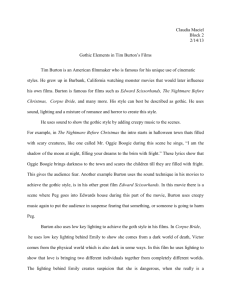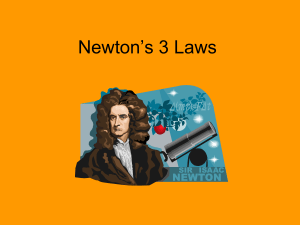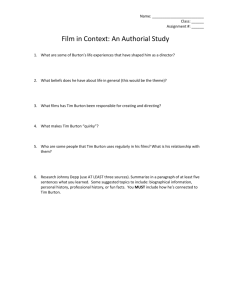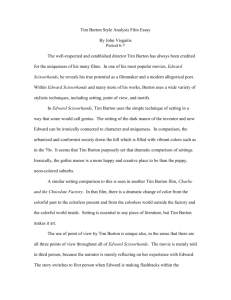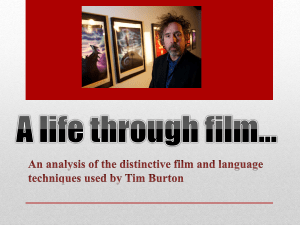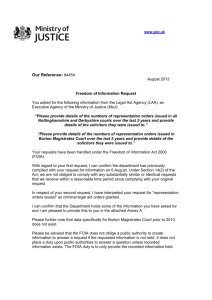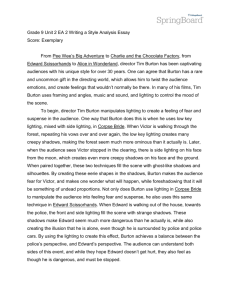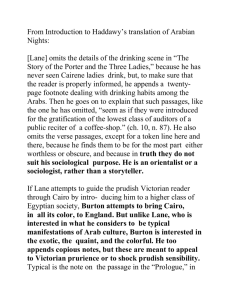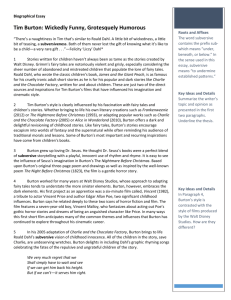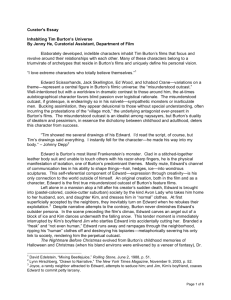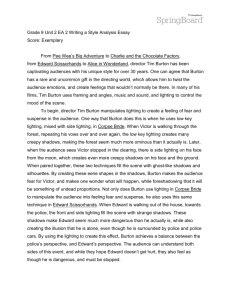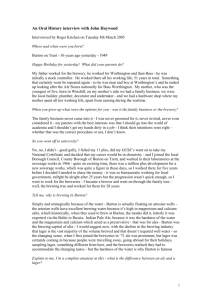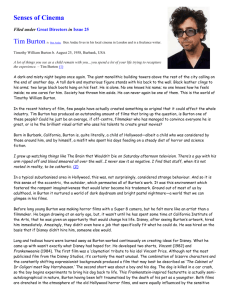Style Analysis Sample
advertisement
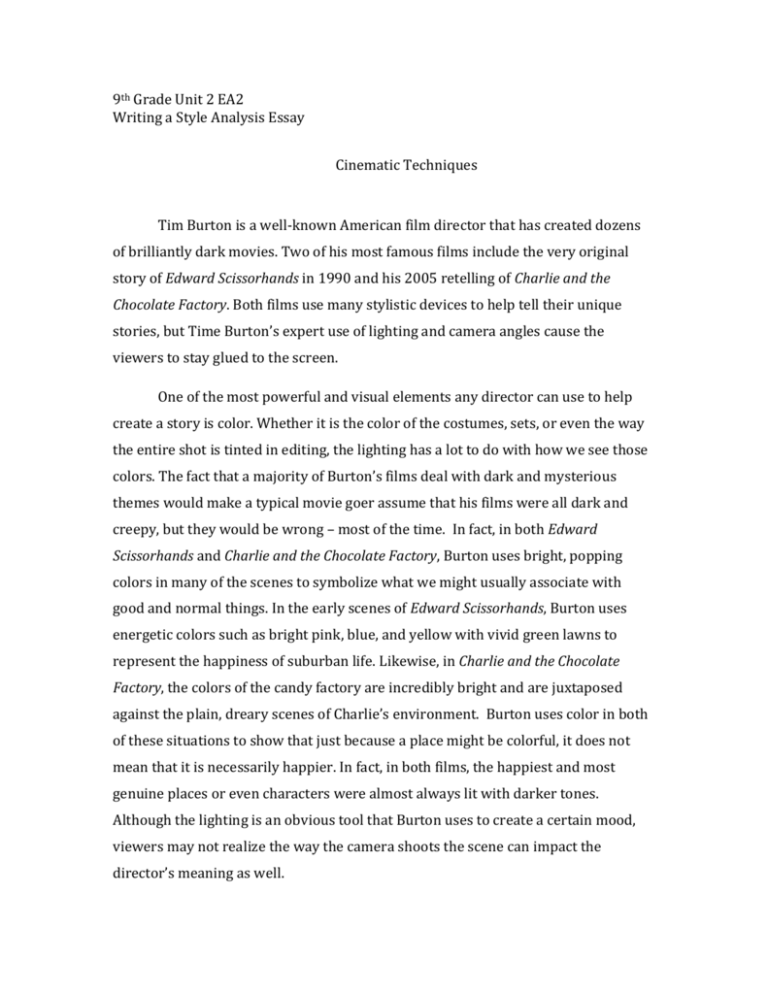
9th Grade Unit 2 EA2 Writing a Style Analysis Essay Cinematic Techniques Tim Burton is a well-known American film director that has created dozens of brilliantly dark movies. Two of his most famous films include the very original story of Edward Scissorhands in 1990 and his 2005 retelling of Charlie and the Chocolate Factory. Both films use many stylistic devices to help tell their unique stories, but Time Burton’s expert use of lighting and camera angles cause the viewers to stay glued to the screen. One of the most powerful and visual elements any director can use to help create a story is color. Whether it is the color of the costumes, sets, or even the way the entire shot is tinted in editing, the lighting has a lot to do with how we see those colors. The fact that a majority of Burton’s films deal with dark and mysterious themes would make a typical movie goer assume that his films were all dark and creepy, but they would be wrong – most of the time. In fact, in both Edward Scissorhands and Charlie and the Chocolate Factory, Burton uses bright, popping colors in many of the scenes to symbolize what we might usually associate with good and normal things. In the early scenes of Edward Scissorhands, Burton uses energetic colors such as bright pink, blue, and yellow with vivid green lawns to represent the happiness of suburban life. Likewise, in Charlie and the Chocolate Factory, the colors of the candy factory are incredibly bright and are juxtaposed against the plain, dreary scenes of Charlie’s environment. Burton uses color in both of these situations to show that just because a place might be colorful, it does not mean that it is necessarily happier. In fact, in both films, the happiest and most genuine places or even characters were almost always lit with darker tones. Although the lighting is an obvious tool that Burton uses to create a certain mood, viewers may not realize the way the camera shoots the scene can impact the director’s meaning as well. Tim Burton does not accidently do anything in any of his films, and every shot is planned. While both films are drastically different in story, Burton’s similar style is demonstrated in each film. In the opening scenes of both films, Burton captures the vast world with extreme wide shots that explore the entire setting of the films. Edward Scissorhands contrasts the attractive suburbs with a monstrous looking mansion, while Burton opens Charlie and the Chocolate Factory painting the entire Wonka town as a gloomy city with wide shots of a dull, snowy, poor place to live life. As each film continues, the viewer is introduced to every important character at eye level and usually using a close up and sometimes even an extreme close up of just their face. This type of shot creates the understanding that this character is important in one way or another. Burton continues to shoot the scenes from a perspective that the viewer is actually at the table with Edward Scissorhands or even looking up at Willy Wonka, as Charlie would. These shots allow the viewer to have the same experience as the characters would; however, Burton does not choose just one character to film from this angle. He wants the movie-goer to feel what it is like to be several of the main characters and realize that each has a different perspective. The lighting and camera effects of many films out there can often be categorized into one simple style: dark, bright, wide shots, close ups. Tim Burton is anything but simple. His vision is complex, yet he has the ability to present complex themes in a seemingly simple and fun movie. Edward Scissorhands and Charlie and the Chocolate Factory are just two examples that demonstrate Burton’s mastery of lighting and camera angles. His unique style and ability to create meaning out of cinematic techniques like these are what makes Tim Burton a genius and one of the most well-known American directors in recent history.
